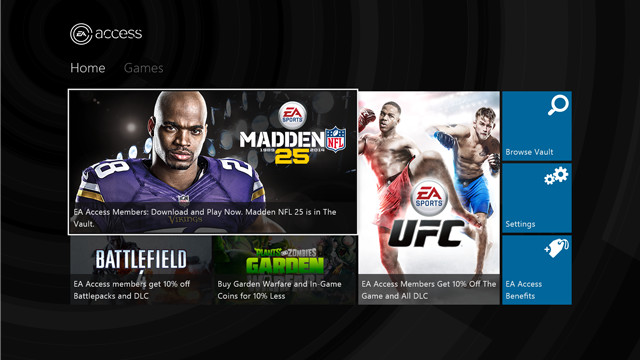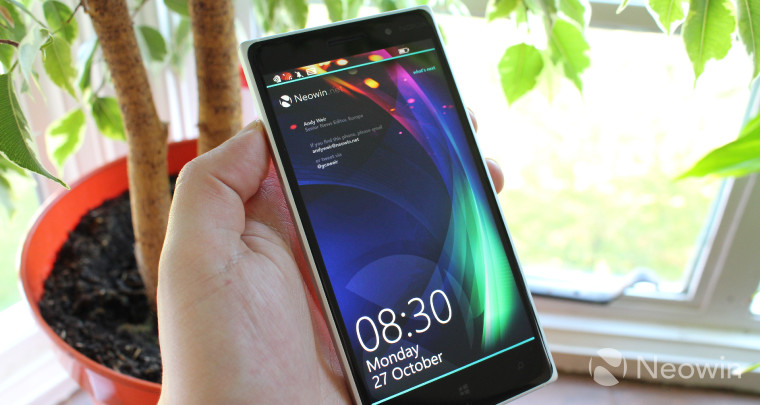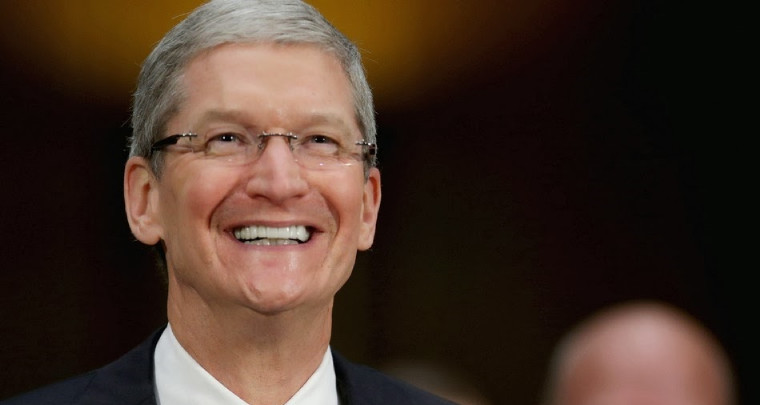7 Days is a weekly round-up of the Editors' picks of what's been happening in the world of technology - written with a dash of humor, a hint of exasperation, and an endless supply of (Irish) coffee.
What a week.
The last seven days have been absolutely crammed full of official announcements, leaks, surprises and so much more – and frankly, we’re glad the weekend has arrived, so that we can finally pause for a breath!

We begin our look back on the week on a note of good news, for Electronic Arts at least. The company’s CEO has said that its EA Access gaming subscription service has been a success since its launch in August.
The service, which is exclusively available on the Xbox One, offers gamers unlimited access to a growing library of titles, along with other perks, for a flat monthly rate of $4.99 a month (or $29.99 for a full year). EA’s chief exec Andrew Wilson said this week that Access has been growing “well beyond early expectations”.

Microsoft rolled out a new update on Monday for Xbox One owners on its Preview program, which provides early access to new features ahead of their wider release. Unfortunately, some users had been experiencing problems with returning to the Home screen from a game, but the update released this week should now fix that glitch.

Those who have been considering buying an Xbox One may well be tempted by Microsoft’s new discounts for the holiday season. The company is offering bundles – such as a white Xbox One (excluding its Kinect motion sensor) with Sunset Overdrive – for just $349.

Speaking of Sunset Overdrive, Neowin editor Anthony Tosie had the opportunity to test drive the utterly bonkers new game ahead of its release this week. It’s every bit as mad as the early trailers and gameplay footage implied, and frankly, it looks like an absolute hoot.
Be sure to check out his review for more on both the good and not-so-good aspects of the game – and, of course, the all-important final verdict.

The first Windows Phone from Archos – one of over two dozen brands that have joined the platform this year – went on sale in Europe this week for just €89 EUR (£70 GBP / $113 USD) off-contract. Like many of the new Windows Phones that have been announced in recent months, the Archos 40 Cesium targets the entry-level of the market, with specs to match its tiny price tag.

The 40 Cesium comes with Windows Phone 8.1 pre-installed, but the rollout of 8.1 to existing handsets continues. The latest data from AdDuplex indicates that the OS update has now been installed on 47% of Windows Phones (and the same report also showed that Microsoft’s Lumia range now accounts for a staggering 95% of all WP handsets).
Microsoft has already announced an even newer release of its OS – Windows Phone 8.1 Update 1, with the latest Lumia Denim firmware. But the rollout of the earlier WP8.1 with Lumia Cyan is slowly dragging on, even as the company prepares to begin pushing the newer update out to devices.

The rollout of 8.1 and Cyan began in mid-July, but with 53% of devices not yet upgraded, there’s still a long way to go. Customers on Verizon, for example, are still waiting for the update to become available – and sadly, it looks like they’ll be waiting a while longer. Microsoft’s Joe Belfiore said on Thursday that the company was working with Verizon on the updates for the Lumia 822, Lumia 928 and Lumia Icon, but admitted: “We aren’t sure how long it will take”.

There was great news for bargain hunters this week in Australia, where Microsoft’s Lumia 530 is now available for half its usual price. Budget-conscious buyers can now get the entry-level Windows Phone for just $39.50 AUD (£22 GBP / $35 USD / €27 EUR), and the deal is made even sweeter thanks to a free additional cover for the handset.

Over in the UK, the mid-range Lumia 735 – popularly known as Microsoft’s ‘selfie phone’, due to the company’s focus on the performance of its front-facing camera – is now available in cyan. The cyan Lumia 735 is available exclusively from Carphone Warehouse, which has promised to launch more Lumia handsets in colours not available elsewhere. Indeed, the cyan option is a world-exclusive for Carphone Warehouse, and it is not even listed on Microsoft’s site.

We took a closer look at the Lumia 830, the device that Microsoft calls its ‘affordable flagship’. Ahead of our full review, we looked at what the device has to offer, and shared some of our first impressions from early testing of the device – be sure to check it out.

Microsoft rolled out a significant update for OneDrive on Windows Phone this week, and the most obvious change is a new look for the app. But just as exciting is the addition of OneDrive for Business support in the app, bringing features that these users have been awaiting for a long time.
But there was even bigger news on the OneDrive front this week, as Microsoft announced that it is boosting storage yet again. After introducing 1TB of inclusive storage for Office 365 customers back in June, the company said on Monday that it is now giving these users unlimited online storage.

Also on Monday, screenshots leaked revealing a new version of Outlook for OS X, followed two days later by more images revealing further details about the next-gen Office for Mac suite. But on Friday, Microsoft surprised us all by officially releasing the new Outlook for Mac, and announcing that a public beta of the wider Office suite will be available for OS X in early 2015.

The company also announced this week that it is planning to launch the next version of Office for Windows in the second half of 2015, while Office is also rumoured to make its way to Android tablets later this month.

At its TechEd Europe conference this week, Microsoft showed off some of the new OS X-style trackpad gestures that it is working on in Windows 10. In the next build of its Technical Preview, Microsoft will allow users to perform gestures such as a three-finger swipe down to minimize all open windows, or swipe left and right to switch between open apps.
Improvements are also on the way for multi-monitor support in Windows 10, including better support for snapping apps to the edges of each display.

Perhaps the most surprising device announcement of the week came from HP, which has taken the idea of desktop computing somewhat literally with its new Sprout PC. The machine allows users to interact with items projected onto a touch-sensitive mat on their desk. If it sounds mad, well, it is a bit – but it’s great to see companies trying out new approaches to computing, and experimenting with new interfaces and user experiences.
Even so, the price of this innovation pushes it out of the reach of many buyers – the base price is $1899, and just keeps going up from there.

Those with more modest budgets may be interested in a much more affordable device from HP, which went on sale this week. The Stream 11 notebook costs just $200, and comes with a free $25 credit for the Windows Store, along with a one-year Office 365 Personal subscription, which – as you’ll remember from earlier in this article – now includes unlimited OneDrive online storage.
The Stream 11 is far from being a high-end mobile powerhouse – but for those on the lookout for a low-cost laptop for basic tasks, like web browsing, email and editing documents, it’s hard to argue with the high-value offering of the new HP notebook.

We’ve seen scores of budget-friendly Windows devices launching in recent months, and the latest example has just gone on sale in the UK. The Linx 7 is one of the most affordable Windows tablets ever to launch in the UK, and features an Intel Bay Trail-T processor, front and rear cameras, 32GB of onboard storage and – like the HP notebook above – also comes with a year of Office 365 and unlimited OneDrive storage.
For just under £80 GBP ($128 USD / €102 EUR), that looks like quite a deal – but of course, we’ll have to wait and see what the user experience is like on such a low-cost device.

Amazon announced a new device this week, going head-to-head with Google’s Chromecast dongle. The Fire TV Stick costs $39, and offers much – but not all – of the functionality available in the company’s Fire TV set-top box, and even includes a similar remote.

There was bad news on Friday for Gottfrid Svartholm Warg, founder of The Pirate Bay, who – along with a 21-year-old accomplice known only as ‘JKT’ – was found guilty of hacking into a company database. It’s being referred to as the biggest hacking case in Danish history, and the prosecution is pushing for a severe sentence, which could see the two men jailed for as long as six years.

In the UK, mobile network giffgaff announced its new 4G goodybags – although its customers may be disappointed to see that there are no unlimited data options available for its 4G service. The company offers a rolling monthly plan with 2000 voice minutes and unlimited 3G data for just £18 a month – but for the same price on 4G, users can only expect to get 5GB a month, and just 1000 minutes of inclusive calls.

Those in the UK with limited data plans may be pleased to hear that the government is investing in upgrading over 1000 public buildings – including libraries, museums, transports hubs and more – with free Wi-Fi hotspots. It’s part of a £150m investment into boosting digital services across the UK, and the rollout is on track for completion by March 2015.

While some have mocked Quad HD displays on phones as being a pointless drain on a device's battery, that hasn’t stopped companies from launching flagship handsets with such high-res displays, including the likes of LG’s G3, among others. But if you thought 2560x1440px was over-the-top on a smartphone display, you’ll probably be rolling your eyes at what’s coming next.
Sharp is reportedly developing 4K displays for handsets with a staggering 4096x2160px resolution, and expects to see the first devices with the ultra-high-res panels launching in 2016. Given that it’s virtually impossible to see a single pixel on a Quad HD display without a magnifying glass, it’s hard to imagine what a 4K display on a smartphone would offer beyond bragging rights and higher prices.

The “world’s thinnest smartphone” was launched this week, with a profile that’s just 4.85mm-thick. The Oppo R5 features a 1.5GHz octa-core Snapdragon 615, 2GB RAM, 13MP camera and 16GB of storage – but its remarkable thinness introduces compromises that somewhat undermine the whole package.
There’s no microSD slot to expand the available storage, so you’ll be limited to 16GB whether you like it or not. But more significantly, it doesn’t even have a 3.5mm audio connector, so if you want to use your headphones with the device, you’ll either have to use the bundled microUSB adapter for your wired headset, or else get a Bluetooth headset instead.
The obsession among some manufacturers to make devices as thin as possible has clearly reached the point where form is getting in the way of function – but as long as people keep buying the things, companies will keep developing them. Incidentally, Oppo has not yet commented on whether or not the R5 will bend, but its press materials don’t list that as a feature.

Never one to miss a bandwagon, Samsung announced its thinnest handsets ever – although they’re a bit thicker than the Oppo device. The Galaxy A3 (6.9mm-thick) and Galaxy A5 (6.9mm-thick) are more affordable companions to the aluminium-bodied Galaxy Alpha, which we reviewed last week.

Samsung also announced this week that its Gear S smartwatch will be launching on AT&T on November 7. Unlike most wearables, the Gear S doesn’t require a phone, as it has its own SIM and phone number – but that also means that it will require a separate two-year contract, with the device costing $199.99 upfront.

But the biggest news on the wearable devices front this week came from Microsoft, which announced a new device called the Band. Priced at $199, the device offers up to 48 hours of battery life from a single 90-minute charge but, predictably, it won’t be available outside of the US for the foreseeable future.

Alongside the Band, the company also launched a new Microsoft Health platform, and – like the device itself – it works not just with Windows, but also Android and iOS.
Microsoft Health is a hugely ambitious endeavour, which aims to become a cross-platform one-stop shop for all things health- and fitness-related, helping users to make better use of the data collected on their wellbeing, to offer them greater insight into how they can improve the way that they live. (Well, that's the idea, anyway.)
Be sure to check out all of our coverage of the Microsoft Band here.

Meanwhile, Apple fans face a long a wait for the company’s new smartwatch to go on sale, after it was announced back in September. Apple has still not disclosed information regarding the Watch’s battery, but its CEO, Tim Cook, said this week that users should expect to “end up charging it daily”.

But Tim Cook also made headlines around the world this week for a very different reason. On Thursday, he made a very personal statement in a guest editorial, in which he said: “While I have never denied my sexuality, I haven’t publicly acknowledged it either, until now. So let me be clear: I’m proud to be gay, and I consider being gay among the greatest gifts God has given me.”
Cook said that he hoped his decision to speak up would offer some hope, inspiration, and perhaps even comfort, to those around the world struggling with their own sexuality, including many who suffer in silence for fear of being persecuted or discriminated against.
What a week.
Students in library image via Shutterstock

















10 Comments - Add comment